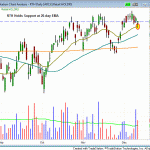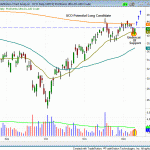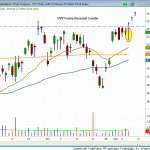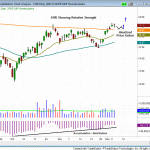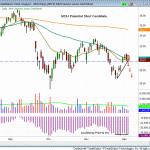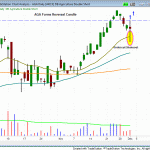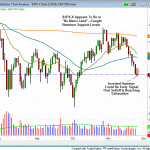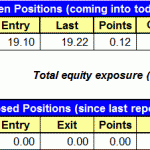A brief review of the S&P 500 ($SPX.X) across various timeframes provides an interesting perspective as to the market’s current structure. The daily chart of the S&P 500 appears to place the index in “no man’s land”, as the current price action is well below the 20-day and 50-day moving averages, yet well above the 200-day MA. However, it is important to note that an inverted hammer candlestick was formed on the daily chart on Friday. Inverted hammers in and of themselves are not considered reversal candles (or buy signals). However, they are often used as an early warning sign that a downtrend may be reaching exhaustion. Whenever an inverted hammer is observed after a protracted selloff and it does not occur near an easily identifiable support level (on the daily chart), we find it useful to reference both the weekly and monthly charts to gain a better picture of the market structure in terms of support and resistance levels. Notice on the weekly chart that the S&P 500 is rapidly approaching support near the 200-day MA. However, the monthly chart of the S&P provides the most pertinent information, as it shows the index is right at support of its 50-day MA. Combined, this information suggests that caution is warranted on the short side and that it may be advisable to lighten up on short positions and/or wait for a bounce in the market before considering new short entries.
